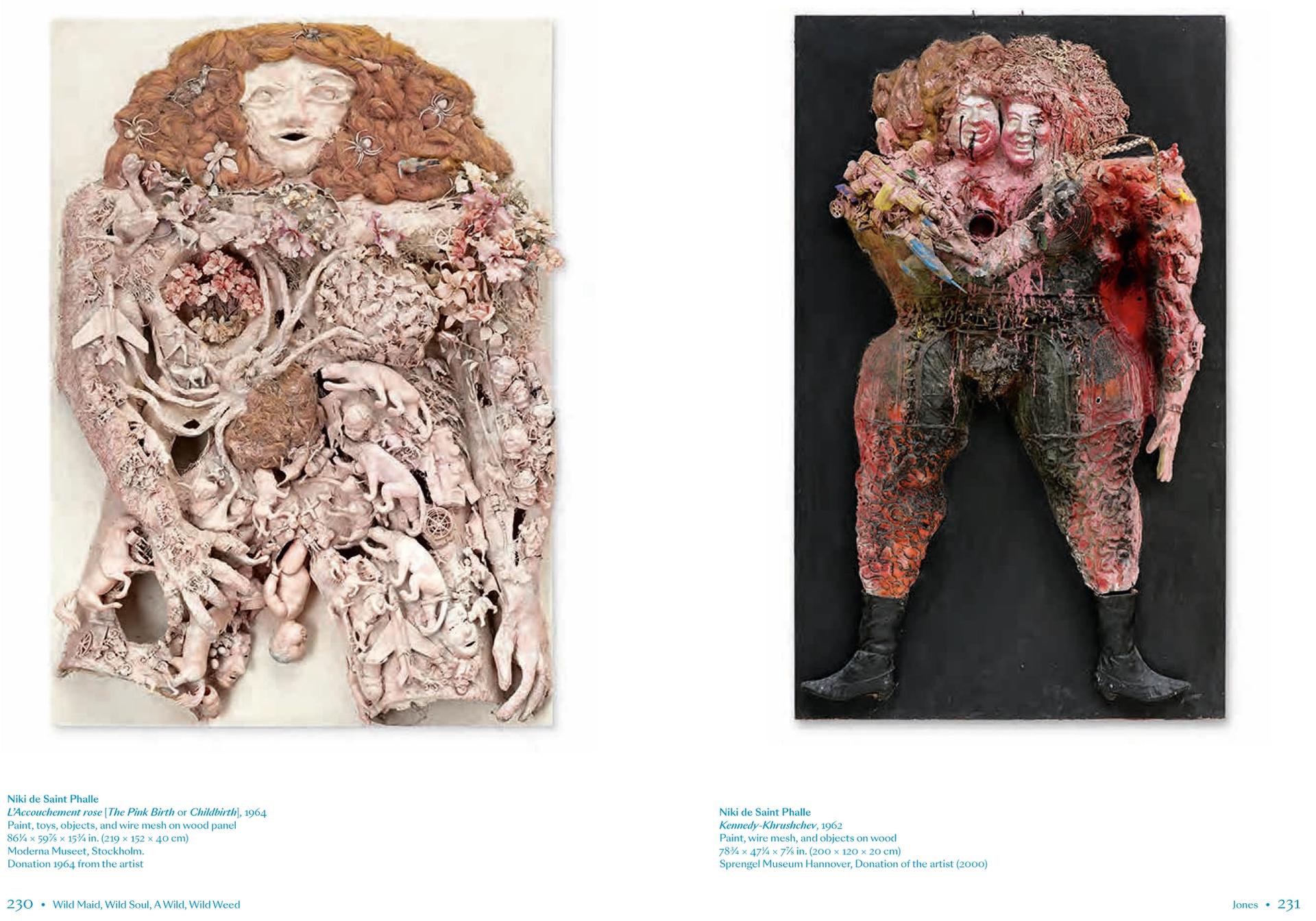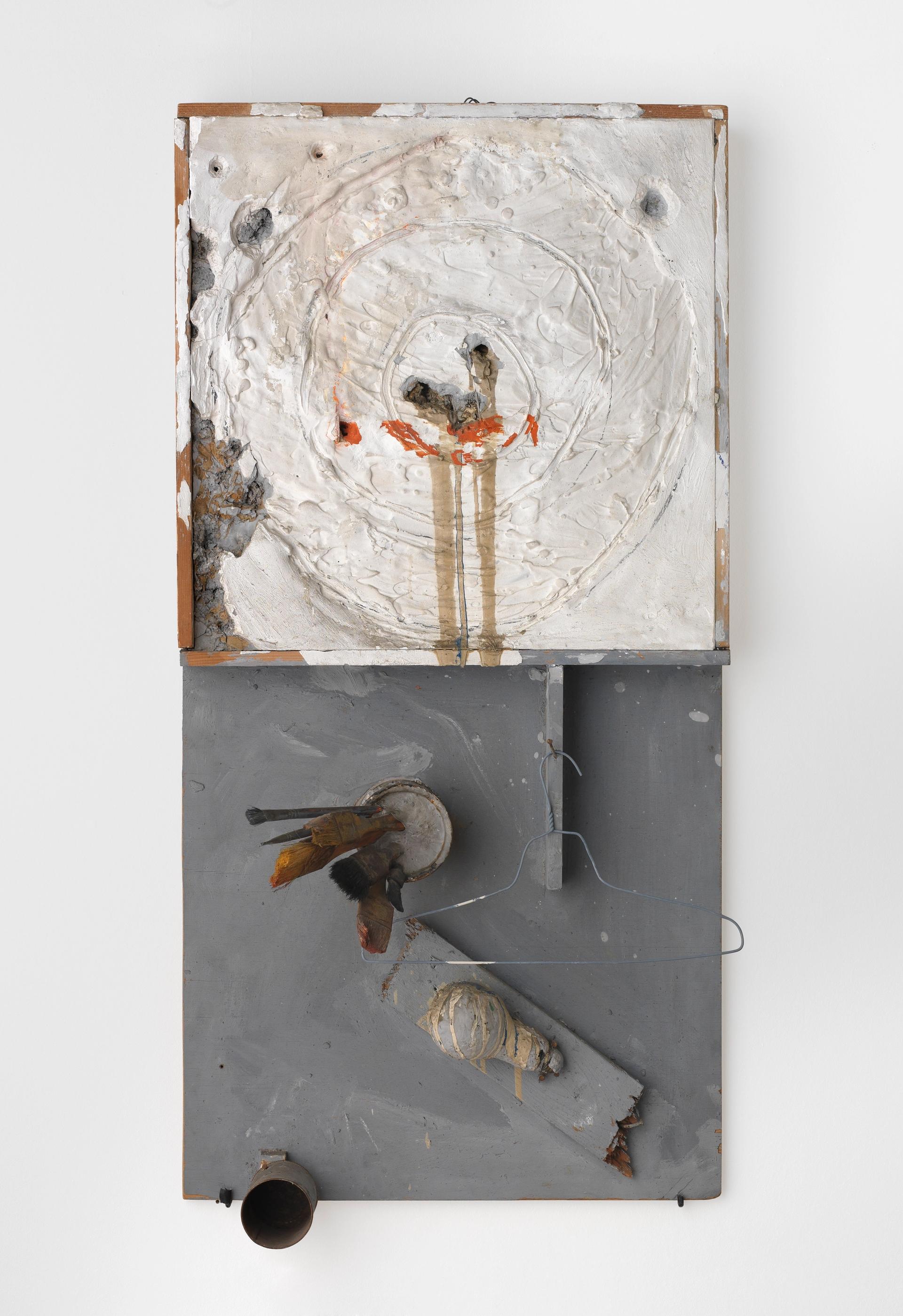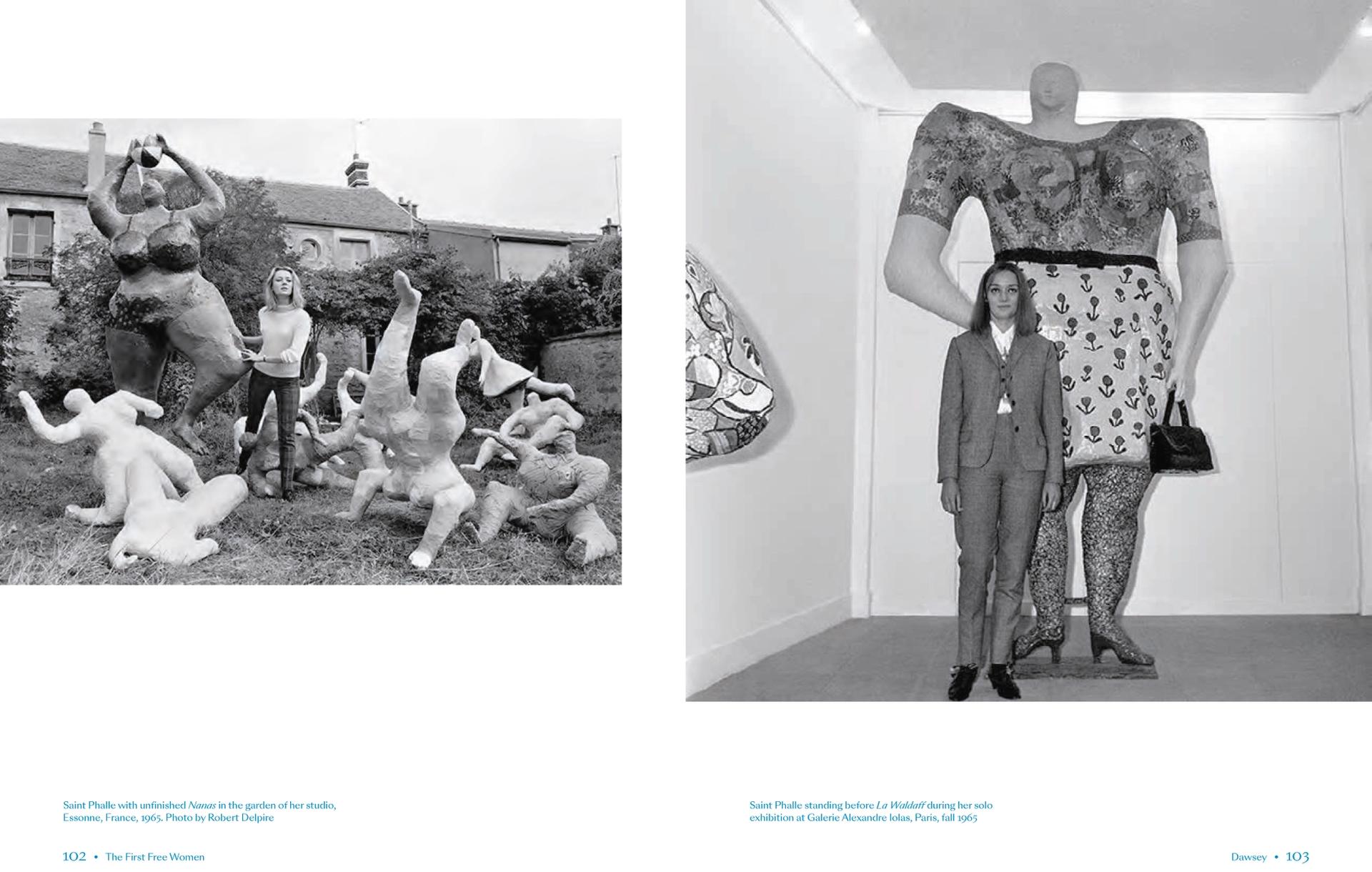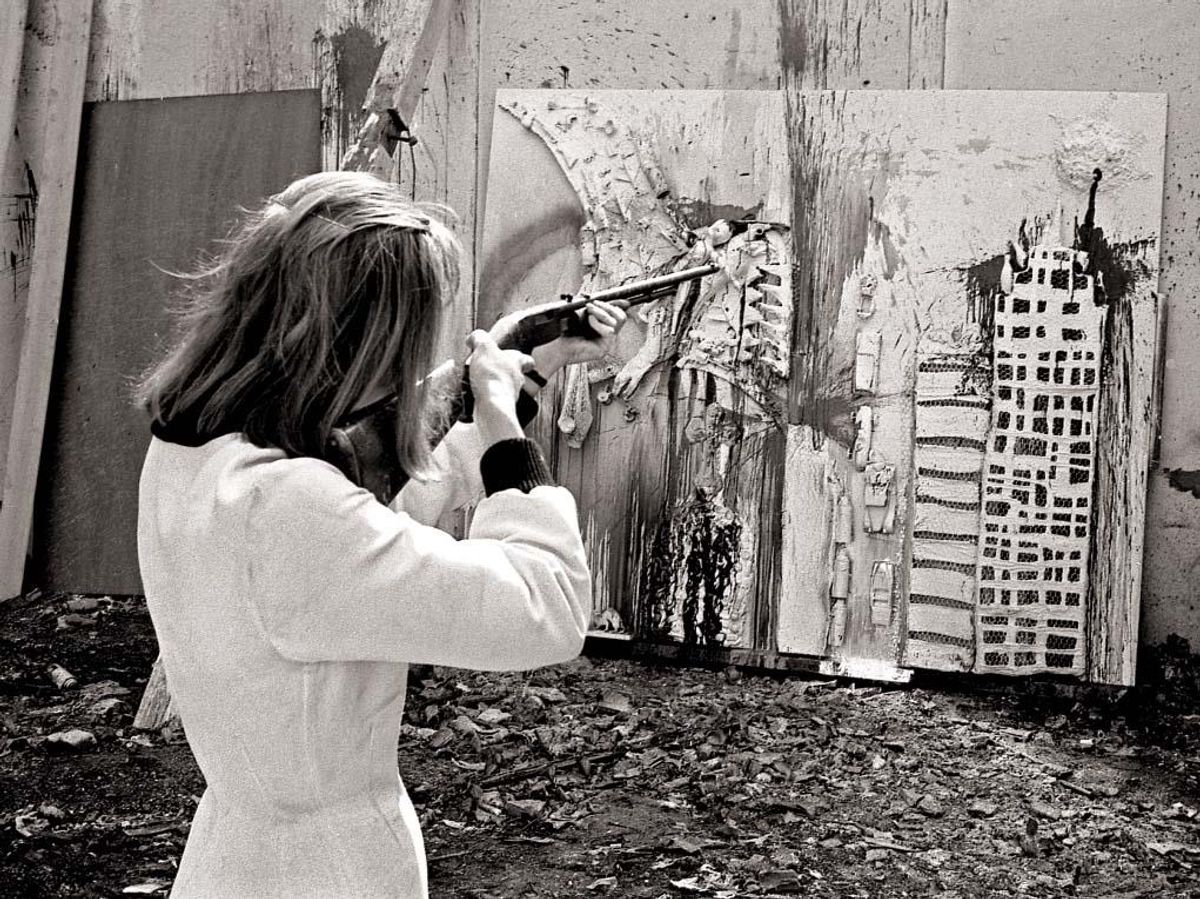The pioneering artist Niki de Saint Phalle, once described as an “American Dadaist” by the art critic John Ashbery and as “the first free woman” by Gloria Steinem, is the subject of a major retrospective at the Menil Collection (until 23 January 2022) focused on the radical “shooting paintings” she made between 1961 and 1963, called Tirs. The exhibition and publication Niki de Saint Phalle in the 1960s, while also delving into Saint Phalle’s well-known Nana sculptures of bulbous female figures, primarily explores the Tirs through previously unseen photographs, some showing the artist wielding the .22 caliber rifle she used to make the works, and others showing the artist alongside her collaborators, who included Robert Rauschenberg and Jasper Johns. An essay by Michelle White, the senior curator of the Menil, aims to contextualise Saint Phalle’s work within the rise of second-wave feminism without limiting the reading of her work to the movement. She writes:
Beginning in the 1990s, the artist began to write extensively about her life and first announced publicly that one of the reasons she had begun to paint, at age 22, was as a revenge fantasy for sexual abuse. Her sharing of this narrative, along with its emotional consequences, was courageous and helps us to interpret her work. The problem is that this origin story, locating her ambitions primarily in her body and her biography, has clouded critical eyes. Art historians have continued to reinforce the claim, which first took hold in the 1960s, that Saint Phalle was an untrained outsider, using such language as ‘unencumbered by the prevailing paradigms’ and ‘uninhibited by the narrow criteria of Modernist art or academic shibboleths’ to essentially pull her out of history.
These examples demonstrate the powerful obstacles to interpreting Saint Phalle’s work as an astute formal and conceptual rebuttal of Modernism. The great paradox of this circumstance is that the artist, along with her contemporaries, actually wished to engage deeply with her audience. By prophetically asking others to participate in colouring the outside world, she was bringing viewers inside her works through an intimate, playful and violence dance that was, at its core, brilliant and literal assault on the Modernist picture plane and on the esoteric, aesthetic remove from reality that the painted surface, by 1961, had come to represent so powerfully. As Saint Phalle declared: “You are the medium!”
The book also includes essays by Jill Dawsey, the chief curator of the Museum of Contemporary Art San Diego, where the show will travel in spring 2022, and Amelia Jones, Ariana Reines and Alena J. WIlliams, with further contributions by Molly Everett and Kyla McDonald.
Photographs from the book:

Left: Saint Phalle on a ladder prior to a winter 1961-62 shooting session, Impasse Ronsin, Paris. Tir tableau Dracula II is visible in the background. Right: Saint Phalle posing with a rifle during the shooting of Tir tableau de Dracula II, winter 1961-62. Both photos: Photo: Giancarlo Botti. Courtesy The Menil Collection.

Pirodactyl over New York (1962). Guggenheim Abu Dhabi. © Niki Charitable Art Foundation. All rights reserved.

Left: L'Accouchement rose (The Pink Birth or Childbirth). (1964). Right: Kennedy-Khruschchev. (1962). Courtesy The Menil Collection.

Tir de Jasper Johns (1961). © Niki Charitable Art Foundation. All rights reserved. Photo: Albin Dahlström/Moderna Museet

Tir, seance 26 juin 1961 (1961). Courtesy The Menil Collection.

Left: Saint Phalle with unfinished Nanas in the garden of her studio in Esonne, France, 1965. Photo: Robert Delpire. Right: Saint Phalle standing before La Waldaff during her solo exhibition at Galerie Alexandre lolas, Paris, fall 1965. Courtesy The Menil Collection.
- Niki de Saint Phallle in the 1960s, Jill Dawsey and Michelle White, with essays by Amelia Jones, Ariana Reines and Alena J. Williams, and contributions by Molly Everett and Kyla McDonalds, Yale University Press, 248pp, $50 (hb).


